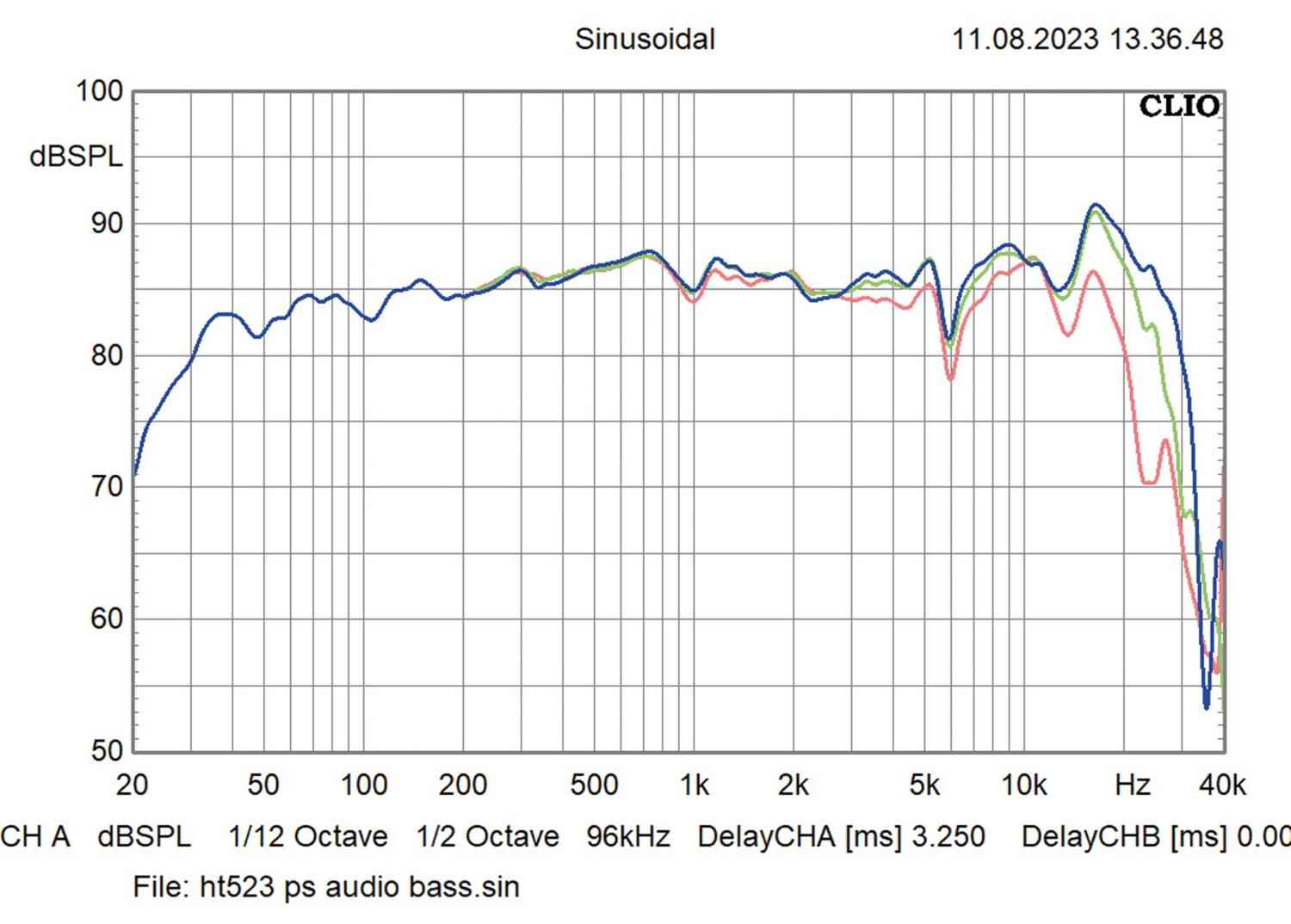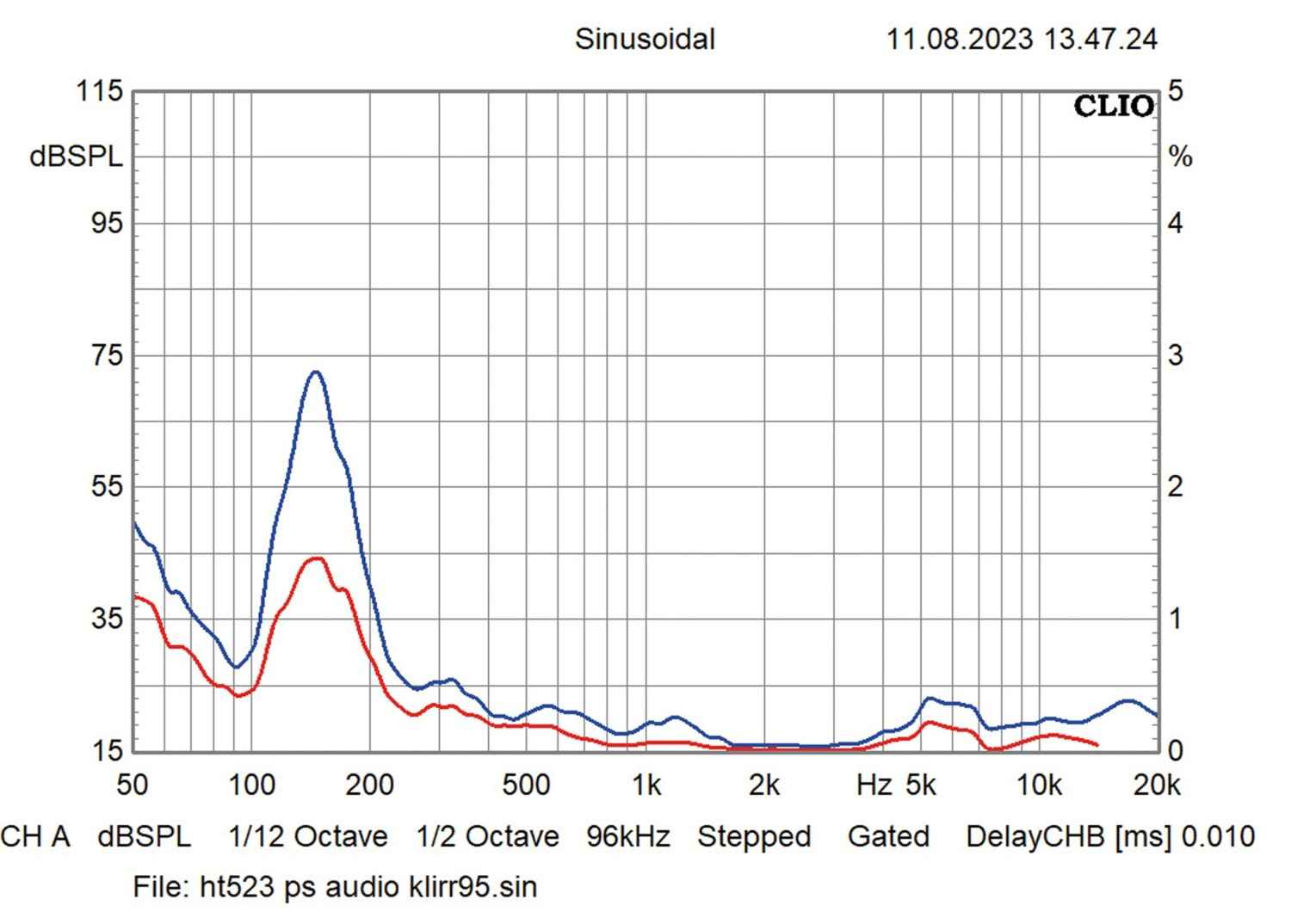- Thread Starter
- #121
It's been 4 months since I first got these FR20's. Here's a quick update:
1- Removed the clutter between the speakers. The stereo image became more sharply centered, not sure I prefer that. My wife definitely approves tough.
2- Added a second amp - Now running both as bridged mono-blocks. Subtle but audible improvement. Slightly better detail, more punchy, as if the attack and decay of the notes got faster, I can "hear" the silence better, if that makes any sense. Given a choice I would stay with two amps, but would have no issue going back to one.
3- Added two 12" sub-woofers. Time to replace my old black sub. Got two SVS SB-1000 PRO in white. These things are tiny. Placed them in opposite corners. No issue with Dirac calibration, good setup for the intended home theater purpose.
Then I thought about setting these up for music. They have a latency of 6 ms and the left sub sits about 6 feet closer to the LP than the FR20s, I figured it should be time aligned. Connected the RCA output of my DAC to the sub, tried setting it by ear and it was a total failure.
After I almost gave up I tried REW to try to see what was going on. To my surprise the curve was a bit flatter with the sub than the FR20s alone. I could easily change the slop by changing the gain on the sub. So I kept changing parameters with the goal of getting the smoothest curve possible.
The final numbers: Left sub-> Gain -32 Crossover 75hz 24db/oct Phase 45 Right sub-> Gain -35 Crossover 75hz 24db/oct Phase 80 Both with a negative peq of -12 dB @ 33hz.
I've heard the term "speakers coming to life" before, never knew what that meant until now. A whole new listening experience. What's really strange (to me) is that I can hardly hear the subwoofers, the volume is so low I have to be next to them to hear anything. Yet I can definitely hear the low end better, so subtle yet clearly audible.
Another area I cannot explain is the subs are not time aligned with each other or the FR20s (19 ms and 26 ms behind the FR20s), yet I can't hear the problem, maybe my tired ears can't resolve?
I was always happy with the low end of the FR20s. In fact there are tracks that have too much low end for my taste. What blows my mind is that with these tracks adding the subwoofers actually lower/tame the bass instead of increasing it, yet the low end is so much cleaner and authoritative.
After picking my jaw from the floor I then decided to connect the subs directly to the speaker outputs so I could check the subs with vinyl. Oh my, this was not what I was expecting. I have never in my life heard records sound this good, ever. Who said vinyl had thin bass?
Now perhaps 10% of what I listen need a little boost in bass, now I can easily increase the gain to taste.
FYI, I would never buy another sub without the ability to tweak parameters from an app. One can save 3 presets plus one default (which I use for HT) the only way to go.
4- Setup finished. After spending many hours listening, doing REW measurements and listening to test tracks, I can confidently say I have the system dialed.
These FR20s are now performing at a level I was not expecting. The sound has such vibrancy, richness and sparkle that one cannot help but to connect emotionally to the music.
The last item on my list is wall treatments, but these need to have a high WAF. Any ideas are welcomed.
Time to shift priorities to enjoying the music instead of setup.
1- Removed the clutter between the speakers. The stereo image became more sharply centered, not sure I prefer that. My wife definitely approves tough.
2- Added a second amp - Now running both as bridged mono-blocks. Subtle but audible improvement. Slightly better detail, more punchy, as if the attack and decay of the notes got faster, I can "hear" the silence better, if that makes any sense. Given a choice I would stay with two amps, but would have no issue going back to one.
3- Added two 12" sub-woofers. Time to replace my old black sub. Got two SVS SB-1000 PRO in white. These things are tiny. Placed them in opposite corners. No issue with Dirac calibration, good setup for the intended home theater purpose.
Then I thought about setting these up for music. They have a latency of 6 ms and the left sub sits about 6 feet closer to the LP than the FR20s, I figured it should be time aligned. Connected the RCA output of my DAC to the sub, tried setting it by ear and it was a total failure.
After I almost gave up I tried REW to try to see what was going on. To my surprise the curve was a bit flatter with the sub than the FR20s alone. I could easily change the slop by changing the gain on the sub. So I kept changing parameters with the goal of getting the smoothest curve possible.
The final numbers: Left sub-> Gain -32 Crossover 75hz 24db/oct Phase 45 Right sub-> Gain -35 Crossover 75hz 24db/oct Phase 80 Both with a negative peq of -12 dB @ 33hz.
I've heard the term "speakers coming to life" before, never knew what that meant until now. A whole new listening experience. What's really strange (to me) is that I can hardly hear the subwoofers, the volume is so low I have to be next to them to hear anything. Yet I can definitely hear the low end better, so subtle yet clearly audible.
Another area I cannot explain is the subs are not time aligned with each other or the FR20s (19 ms and 26 ms behind the FR20s), yet I can't hear the problem, maybe my tired ears can't resolve?
I was always happy with the low end of the FR20s. In fact there are tracks that have too much low end for my taste. What blows my mind is that with these tracks adding the subwoofers actually lower/tame the bass instead of increasing it, yet the low end is so much cleaner and authoritative.
After picking my jaw from the floor I then decided to connect the subs directly to the speaker outputs so I could check the subs with vinyl. Oh my, this was not what I was expecting. I have never in my life heard records sound this good, ever. Who said vinyl had thin bass?
Now perhaps 10% of what I listen need a little boost in bass, now I can easily increase the gain to taste.
FYI, I would never buy another sub without the ability to tweak parameters from an app. One can save 3 presets plus one default (which I use for HT) the only way to go.
4- Setup finished. After spending many hours listening, doing REW measurements and listening to test tracks, I can confidently say I have the system dialed.
These FR20s are now performing at a level I was not expecting. The sound has such vibrancy, richness and sparkle that one cannot help but to connect emotionally to the music.
The last item on my list is wall treatments, but these need to have a high WAF. Any ideas are welcomed.
Time to shift priorities to enjoying the music instead of setup.



